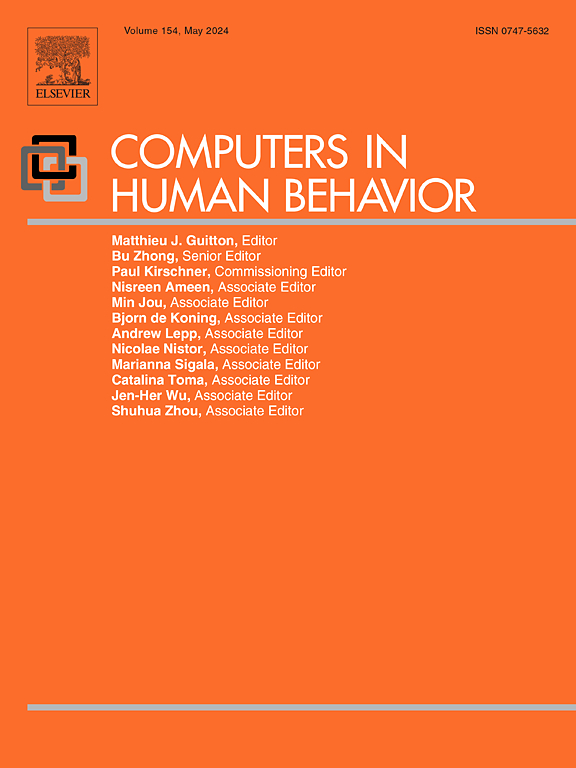Using a two-stage method to understand the critical factors influencing customers’ intention to switch from traditional to artificial intelligence based banking services: A perspective based on the push–pull–mooring model
IF 9
1区 心理学
Q1 PSYCHOLOGY, EXPERIMENTAL
引用次数: 0
Abstract
Purpose
Generative artificial intelligence (GenAI) enables banks to enhance customer service experiences. However, limited research has been conducted on factors influencing customers’ intention to switch from traditional to artificial intelligence (AI) based banking services. Therefore, the present study explored the key antecedents of the aforementioned intention.
Methods
This two-stage study was based on the push–pull–mooring model. In Stage 1, in-depth semistructured interviews were conducted with stakeholders related to AI-based banking services to identify critical factors influencing customers’ intention to switch from traditional to AI-based customer services. In Stage 2, the results obtained in Stage 1 were combined with results from the literature to create a second-order model and direct-effect model (Models 1 and 2, respectively). Quantitative survey data were then collected to validate these models.
Results
Model 1 indicated that among pull, push, and mooring factors, pull factors had the strongest effect on the aforementioned intention, followed by mooring factors and then push factors. The explanatory power (R2) of this model was 70 %. Furthermore, Model 2 indicated that the attractiveness of the alternative (a pull factor) and the need for interpersonal interaction and inertia (mooring factors) were the key factors influencing switching intention. The explanatory power (R2) of this model was 76 %.
Conclusion
In summary, this study identified and validated critical factors affecting customers’ intention to switch to AI-based banking services. The findings enrich the understanding the social interaction and user behavior of AI, offering valuable insights for promoting AI-driven services and applications.
使用两阶段方法了解影响客户从传统银行服务转向基于人工智能的银行服务意愿的关键因素:基于推拉系泊模型的视角
目的 人工智能(GenAI)使银行能够提升客户服务体验。然而,关于影响客户从传统银行服务转向人工智能(AI)银行服务意向的因素的研究还很有限。因此,本研究探讨了上述意向的关键前因。方法本研究基于推-拉-移动模型,分两个阶段进行。在第一阶段,研究人员对与人工智能银行服务相关的利益相关者进行了深入的半结构式访谈,以确定影响客户从传统客户服务转向人工智能客户服务意向的关键因素。在第二阶段,将第一阶段获得的结果与文献结果相结合,创建了二阶模型和直接效应模型(分别为模型 1 和模型 2)。结果模型 1 表明,在拉动因素、推动因素和停泊因素中,拉动因素对上述意向的影响最大,其次是停泊因素,然后是推动因素。该模型的解释力(R2)为 70%。此外,模型 2 表明,替代品的吸引力(拉动因素)和人际互动需求及惰性(停泊因素)是影响转换意向的关键因素。该模型的解释力(R2)为 76%。结论综上所述,本研究确定并验证了影响客户转向基于人工智能的银行服务意向的关键因素。研究结果丰富了人们对人工智能的社会互动和用户行为的理解,为推广人工智能驱动的服务和应用提供了有价值的见解。
本文章由计算机程序翻译,如有差异,请以英文原文为准。
求助全文
约1分钟内获得全文
求助全文
来源期刊

Computers in Human Behavior
Multiple-
CiteScore
19.10
自引率
4.00%
发文量
381
审稿时长
40 days
期刊介绍:
Computers in Human Behavior is a scholarly journal that explores the psychological aspects of computer use. It covers original theoretical works, research reports, literature reviews, and software and book reviews. The journal examines both the use of computers in psychology, psychiatry, and related fields, and the psychological impact of computer use on individuals, groups, and society. Articles discuss topics such as professional practice, training, research, human development, learning, cognition, personality, and social interactions. It focuses on human interactions with computers, considering the computer as a medium through which human behaviors are shaped and expressed. Professionals interested in the psychological aspects of computer use will find this journal valuable, even with limited knowledge of computers.
 求助内容:
求助内容: 应助结果提醒方式:
应助结果提醒方式:


